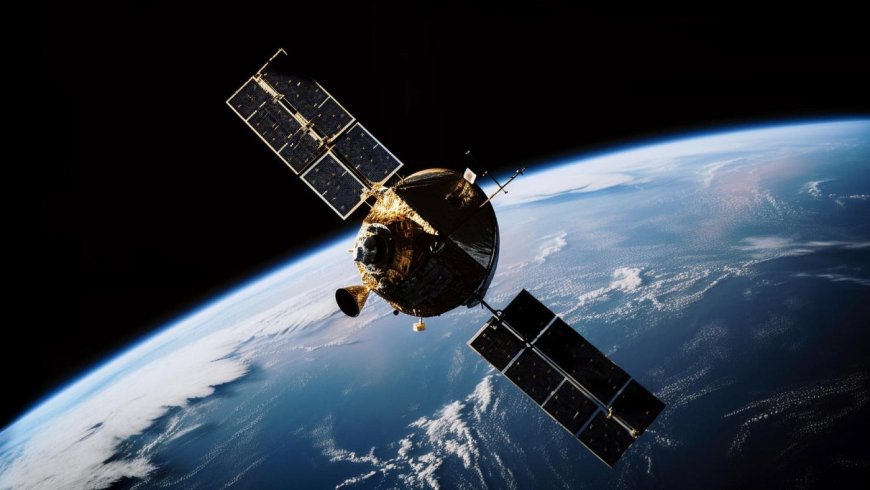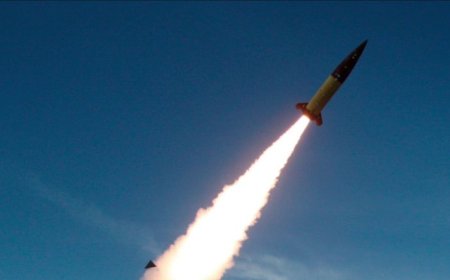Space Exploration and Astronomy
Space exploration and astronomy delve into the study of celestial objects, phenomena, and the itself, revealing the mysteries beyond our planet. These fields play a vital role in advancing scientific knowledge and technological innovation, offering insights into the origins of the universe, the potential for extraterrestrial life, and the conditions necessary for life to thrive. Major milestones in space exploration, including human spaceflight, lunar missions, Mars rovers, and the discovery of exoplanets, have expanded our understanding of the cosmos. Furthermore, the sociocultural impact of space exploration fosters global awareness and inspires future generations in STEM fields. As technology evolves, the continuation of space exploration promises to unveil new discoveries and deepen our understanding of the universe's vast complexity.

Introduction
Space exploration and astronomy have captivated humanity's imagination for centuries, driving our quest to understand the universe, our place within it, and the potential for life beyond Earth. Astronomy, the science of observing celestial objects and phenomena, provides the framework for understanding the cosmos, while space exploration employs technology to directly observe and study celestial bodies. This essay elucidates the significance of space exploration and astronomy, the advancements in technology that have propelled these fields forward, the potential for interstellar travel and extraterrestrial life, and the sociocultural impacts of our quest for knowledge beyond our planet.
The significance of space exploration and astronomy extends far beyond mere curiosity; these disciplines are pivotal in addressing fundamental questions about existence and the nature of reality. Through telescopes and satellites, we have unveiled the mysteries of black holes, the birth and death of stars, and the intricate dance of galaxies. Each discovery not only enhances our scientific knowledge but also inspires future generations to pursue careers in STEM fields, thereby fostering a culture of innovation and inquiry.
Technological advancements have played an indispensable role in the evolution of these fields. The development of sophisticated instruments, such as the Hubble Space Telescope and the Mars rovers, has enabled unprecedented observations and data collection. These innovations have transformed our understanding of phenomena like dark matter and exoplanets, revealing the vastness and complexity of the universe. Furthermore, emerging technologies, including artificial intelligence and machine learning, promise to revolutionize data analysis, allowing astronomers to sift through vast amounts of information at an unprecedented pace.
The potential for interstellar travel remains one of the most exhilarating prospects of space exploration. Concepts such as warp drives and wormholes, once relegated to the realm of science fiction, are now subjects of serious scientific inquiry. As we develop more efficient propulsion systems and explore the possibility of colonizing other planets, the dream of reaching distant star systems may one day become a reality.
The search for extraterrestrial life is another compelling facet of our cosmic journey. Discovering microbial life on Mars or the moons of Jupiter and Saturn could redefine our understanding of life itself. The sociocultural implications of such findings are profound, challenging our philosophical perspectives and prompting discussions about our responsibilities as stewards of the universe.
The Importance of Space Exploration and Astronomy
Space exploration and astronomy are essential for several reasons. Firstly, they enhance our understanding of fundamental scientific principles, such as gravity, time, and the nature of light. As we observe distant galaxies and study the behavior of celestial bodies, we refine our understanding of physical laws and phenomena. The intricate dance of planetary orbits and the enigmatic behavior of black holes challenge our perceptions and stimulate further inquiry, pushing the boundaries of human knowledge.
Secondly, space exploration has led to technological advancements that benefit life on Earth. Innovations such as satellite technology, GPS, weather forecasting, and telecommunications are direct results of our endeavors in space. These technologies have transformed daily life, facilitating global communication, improving navigation, and enhancing disaster preparedness. Moreover, many materials and techniques developed for space missions, such as advanced robotics and imaging technologies, have found applications in industries such as medicine, where they enhance diagnostic capabilities and treatment options, and environmental monitoring, where they aid in tracking climate change and natural disasters.
Thirdly, the exploration of our solar system and beyond offers profound insights into the origins and evolution of our own planet. Studying celestial bodies, such as Mars and the moons of Jupiter and Saturn, can provide clues about the conditions that led to the emergence of life on Earth. For example, the discovery of water ice on Mars and the subsurface oceans of Europa and Enceladus raises tantalizing possibilities about extraterrestrial life and the universality of biological processes. By understanding the geological and atmospheric conditions of these bodies, we can better comprehend the complex interplay of factors that have shaped our own environment.
Furthermore, space exploration fosters international collaboration and inspires future generations. As nations unite in the pursuit of common goals, such as the Artemis program aiming to return humans to the Moon and eventually reach Mars, a spirit of cooperation emerges that transcends borders. This collaboration not only strengthens diplomatic ties but also cultivates a shared sense of responsibility for our planet and the cosmos.
Advancements in Space Exploration Technology
The evolution of space exploration technology has been pivotal in expanding our reach into the cosmos. The mid-20th century marked the dawn of the space age, characterized by monumental milestones such as the launch of Sputnik by the Soviet Union in 1957, followed by human spaceflight achieved by the United States with the Mercury and Gemini programs culminating in the Apollo 11 moon landing in 1969.
In the 21st century, significant advancements have been made in spacecraft design, propulsion systems, and robotics. Missions such as the Mars rovers (Spirit, Opportunity, Curiosity, and Perseverance) have expanded our understanding of the Martian landscape and the potential for past or present life. Each rover has been equipped with cutting-edge instruments, including spectrometers and cameras, allowing scientists to analyze soil samples and search for organic compounds. The ongoing James Webb Space Telescope promises to revolutionize our understanding of the universe by observing faint astronomical objects and providing insights into the early stages of star and galaxy formation. Its advanced infrared capabilities will enable astronomers to peer through cosmic dust and unveil the secrets of distant galaxies, potentially reshaping our comprehension of the universe’s evolution.
The emergence of commercial space companies has also transformed the landscape of space exploration. Firms such as SpaceX and Blue Origin are pioneering reusable rocket technology, significantly reducing the cost of space travel and enabling greater accessibility for research and tourism. SpaceX's Starship, designed for missions to Mars and beyond, exemplifies the ambition of private enterprises to not only transport cargo but also to facilitate human colonization of other planets. Meanwhile, Blue Origin’s New Shepard is making strides in suborbital tourism, offering civilians a taste of weightlessness and the opportunity to witness Earth from the edge of space.
Additionally, the integration of artificial intelligence and machine learning into space exploration has enhanced mission efficiency and data analysis. Autonomous systems are now capable of making real-time decisions in the harsh environments of space, allowing for more complex and ambitious missions. The collaboration between government agencies like NASA and private companies is fostering an era of unprecedented innovation, setting the stage for future explorations that may include manned missions to Mars and the establishment of lunar bases.
As we stand on the threshold of a new era in space exploration, the synergy of technology, collaboration, and visionary ambition promises to unlock the mysteries of our universe, inspiring generations to come. The journey is far from over; it is only just beginning.
The Search for Extraterrestrial Life
One of the most compelling questions in astronomy and space exploration is the potential for extraterrestrial life. The discovery of exoplanets—planets orbiting stars outside our solar system—has accelerated interest in this area. Recent advancements in spectroscopy and other observational techniques allow astronomers to analyze the atmospheres of these planets, searching for biosignatures—chemical indicators of life. This burgeoning field of astrobiology seeks to understand not just where life might exist, but how it could arise and evolve in environments vastly different from our own.
Mars, as our closest planetary neighbor, remains a focal point for exploring past life conditions. The future Mars Sample Return mission aims to bring back Martian soil and rock samples for detailed analysis on Earth, potentially uncovering evidence of ancient microbial life. The intrigue surrounding Mars is compounded by discoveries of seasonal methane emissions and recurring slope lineae, suggesting that liquid water may still exist beneath its surface. These findings bolster the hypothesis that Mars once harbored conditions suitable for life.
In addition to Mars, missions to the icy moons of Jupiter, particularly Europa, and Saturn, specifically Enceladus, seek to explore subsurface oceans that may harbor microbial life. The plumes of water vapor erupting from Enceladus, rich in organic compounds, present tantalizing clues about the moon’s oceanic environment. Similarly, Europa's icy crust conceals a vast ocean that could provide the necessary ingredients for life. Future missions, such as the Europa Clipper, aim to investigate these environments, potentially opening a new chapter in our understanding of life beyond Earth.
The search for extraterrestrial intelligence (SETI) involves scanning the cosmos for signals that suggest intelligent life exists elsewhere. Efforts such as the Breakthrough Listen project exemplify humanity’s desire to connect with potential extraterrestrial civilizations. By utilizing powerful radio telescopes and advanced algorithms, scientists are meticulously analyzing vast swathes of the sky for any signs of artificial signals. This endeavor not only seeks to answer the profound question of whether we are alone in the universe, but it also reflects our innate curiosity and desire for connection.
As our technological capabilities continue to expand, the search for extraterrestrial life becomes increasingly sophisticated. Each mission and discovery brings us closer to understanding our place in the cosmos, igniting the imagination and inspiring future generations to reach for the stars. The quest for life beyond Earth is not merely a scientific pursuit; it is a fundamental exploration of existence itself, challenging us to contemplate the possibilities that lie beyond our home planet.
Sociocultural Impact of Space Exploration
The sociocultural impact of space exploration extends beyond mere scientific advancement; it resonates deeply within the fabric of human culture, philosophy, and societal values. The iconic image of Earth taken from space has become a powerful symbol of global unity and environmental consciousness, prompting humanity to reevaluate its relationship with the planet. This perspective shift, often referred to as the "Overview Effect," as articulated by astronaut Frank White, encapsulates the transformative experience of viewing Earth as a fragile oasis amidst the vast cosmos. Astronauts frequently return with a renewed sense of responsibility, advocating for global stewardship and sustainability, as they recognize the interconnectedness of all life on our planet.
Moreover, space exploration serves as a profound source of inspiration, particularly for the younger generations. Initiatives like NASA’s Artemis program, which aims to land "the first woman and the next man" on the Moon, act as catalysts for educational outreach and engagement in STEM (science, technology, engineering, and mathematics) fields. By showcasing the possibilities of human achievement in space, these programs ignite curiosity and ambition among students, encouraging them to pursue careers in scientific disciplines. This is crucial in a time when the demand for skilled professionals in STEM fields is surging, and innovation is essential for addressing complex global challenges.
The cultural narratives surrounding space exploration also influence philosophy and ethics. As we venture further into the cosmos, questions regarding the potential for extraterrestrial life, the ethical implications of space colonization, and the preservation of celestial bodies arise. These discussions challenge us to think critically about our role in the universe and the moral responsibilities that accompany our quest for knowledge.
Additionally, space exploration fosters international collaboration, as nations come together to share resources, knowledge, and expertise. Programs like the International Space Station exemplify how collective efforts can transcend geopolitical boundaries, promoting peace and cooperation in the pursuit of a common goal.
The sociocultural impact of space exploration is multifaceted, fostering a sense of global unity, inspiring future generations, and prompting profound philosophical inquiries. As we continue to explore the cosmos, we not only expand our scientific horizons but also deepen our understanding of ourselves and our place within the universe.
Conclusion
Space exploration and astronomy represent humanity’s innate curiosity and desire to understand the broader cosmos. Through technological advancements and groundbreaking research, we continue to uncover the mysteries of the universe, providing insights that extend not only to scientific understanding but also to our cultural and philosophical views. As we embark on the next stages of our journey into space, the potential for discovering new worlds and possibly life beyond Earth strengthens our resolve to explore the final frontier. Continued investment in these fields is vital as we seek answers to profound questions that not only shape our understanding of the universe but also illuminate our place within it.
What's Your Reaction?
 Like
0
Like
0
 Dislike
0
Dislike
0
 Love
0
Love
0
 Funny
0
Funny
0
 Angry
0
Angry
0
 Sad
0
Sad
0
 Wow
0
Wow
0









































